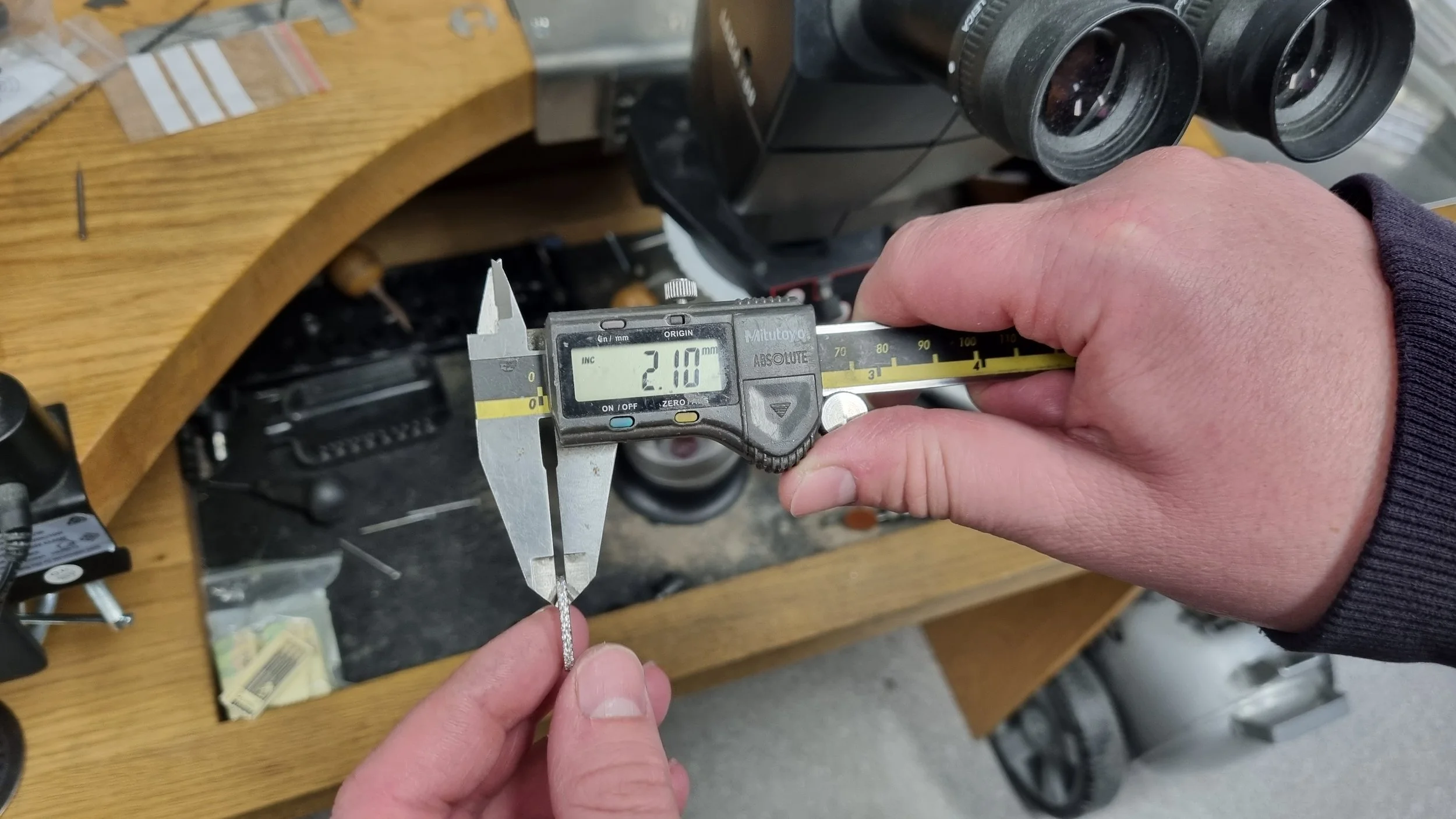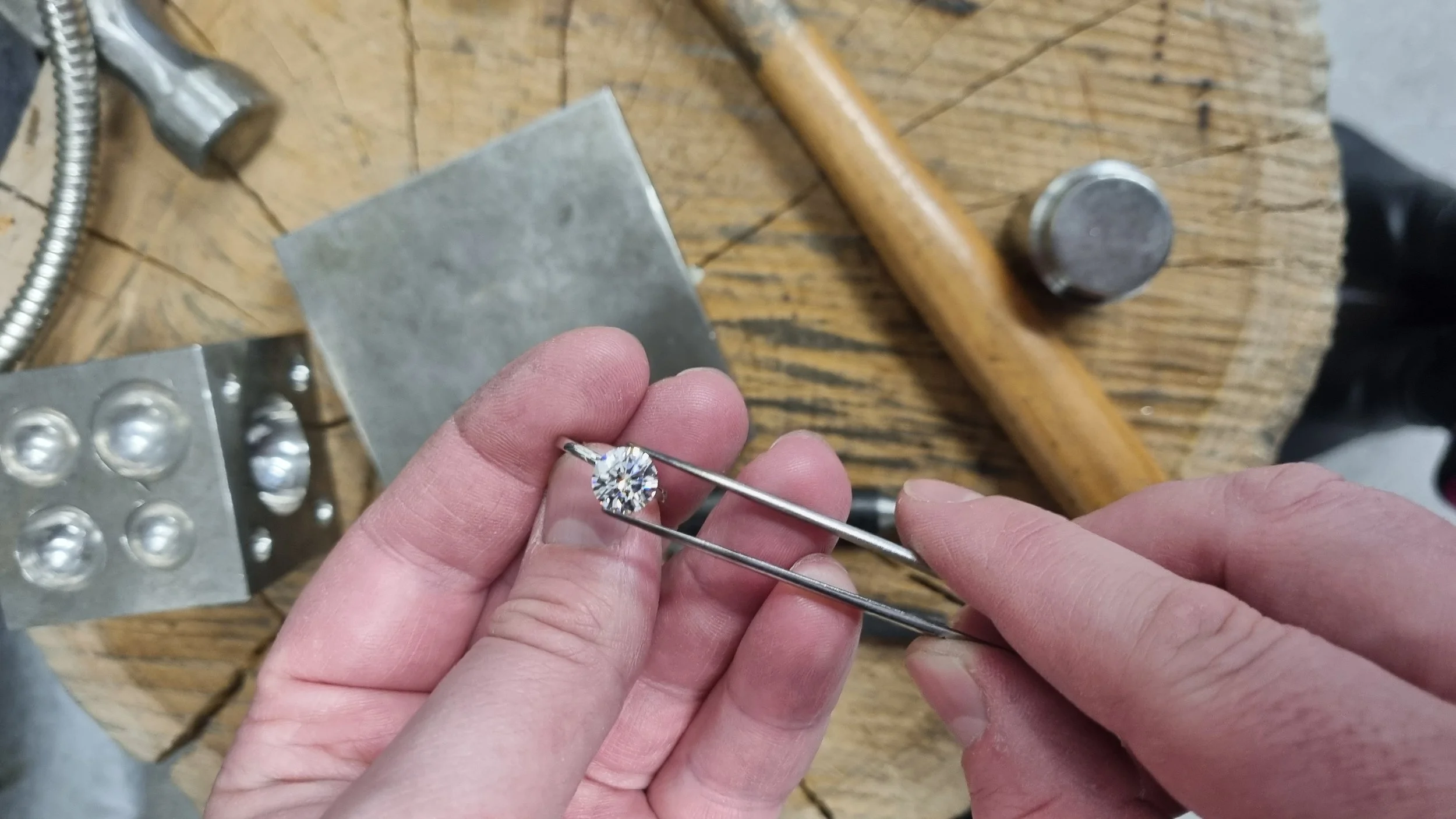Thin bands on engagement rings are a style that some love in a ring design. Whether you’re looking for a minimalist style, or are seeking the gemstones to be the star of a piece, barely-there setting styles with delicately thin bands may be the designs you’re drawn to.
However, for an engagement ring, which is typically worn every day over many years, there are two important things to think about before deciding on a thin band in your ring design.
1. Precious metals bend.
First, the precious metals used to make high quality jewellery are not only rare, but also malleable. Gold and Platinum bend with force, which makes them excellent metals for creating hand-forged jewellery with. This malleability means they need a certain amount of thickness to be strong and durable enough for an engagement ring that will be worn every day. Too thin, and the ring can buckle even from everyday activities as simple as pulling a door handle.
This is particularly important for engagement rings that have diamonds or other gemstones set along the band. Allowances in the metal structure to incorporate the gems means that the thickness and width of the band must be well designed, to be structurally strong.
For durability reasons, I don’t make engagement rings with bands any narrower than 2mm at the Harlequin workshop. I want to make sure you can confidently enjoy wearing your ring for many years to come.
2. Ring designs need balance.
Second, a beautiful and timeless engagement ring style needs balance. A band on an engagement ring needs to be in proportion to the rest of the ring design for it to look like a great design.
The size of the gemstones in an engagement ring is one part of the design that will influence the band width you need. For example, a ring with a 5ct round brilliant cut diamond at its centre would appear disproportionate on a slim 1.8mm band. A wider band would better suit such a statement diamond, and provide the strength needed for the setting of the ring.
Similarly, ring size also dictates what width will suit your finger, to create an engagement ring you’ll love to wear. A band that is too narrow can appear out of proportion and reduce the strength of the ring. Instead, a ring width in proportion to the ring size creates a beautifully proportioned ring style that can hold up well to the demands of everyday wear.
So, if you’ve been looking for an engagement ring design with a thin style band, I encourage you to consider what will be best width for your unique ring. Your ring size, gemstones, personal style, and overall ring design, will all influence what band will best suit your custom ring design.
There are always ways to achieve the style you’re after, while also making sure your ring is well designed for balance and durability. Details like the setting style, metalwork, proportions, and gem choice all work together to create a style in an engagement ring. Beautifully delicate rings are achieved not only with a thin engagement ring band, but through all the details of the ring design as a whole.
For help designing your perfect engagement ring, book a time directly with a jeweller to get practical advice.








